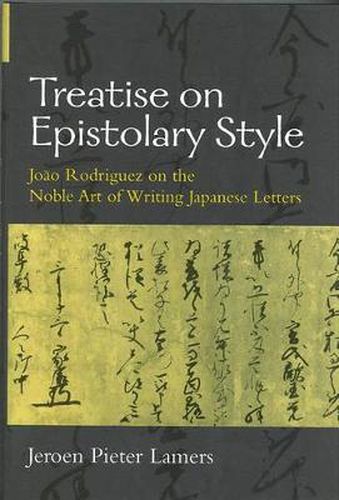Readings Newsletter
Become a Readings Member to make your shopping experience even easier.
Sign in or sign up for free!
You’re not far away from qualifying for FREE standard shipping within Australia
You’ve qualified for FREE standard shipping within Australia
The cart is loading…






The Great Grammar of the Japanese Language (Arte da lingoa de Japam) was written by the Portuguese Jesuit missionary Joao Rodriguez (1561-1633) and printed by the Jesuit mission press in Nagasaki between 1604 and 1608. The grammar is a veritable treasure house of information about the Japanese language in the late sixteenth and early seventeenth centuries, and particularly the language of polite society.Japanese epistolary style, or sorobun, is one of the topics dealt with by Rodriguez. Rodriguez explains in his Treatise on Epistolary Style what kind of letters there are and their names, the set phrases that are used, how a letter is divided into its component parts, how to interpret the physical layout of a letter, and how the level of politeness can be determined. Rodriguez deals extensively with the courtesies for the Buddhist clergy, and he proposes an adaptation of these forms so that they can be used for and by Jesuit missionaries in Japan. Finally, Rodriguez provides a large number of sample letters.
The Treatise on Epistolary Style has a twofold utility for modern readers. First, it is an excellent instrument for dissecting Japanese letters from the early-modern era into their component parts. Second, it can help to make apparent the valuable historical and social clues that are often hidden in what appear to be trivial epistolary details. Once one understands the principles of the Japanese epistolary style, with its subtle social nuances and minute gradations of courtesies, much more information can be obtained from early-modern documents than their factual contents alone.
$9.00 standard shipping within Australia
FREE standard shipping within Australia for orders over $100.00
Express & International shipping calculated at checkout
The Great Grammar of the Japanese Language (Arte da lingoa de Japam) was written by the Portuguese Jesuit missionary Joao Rodriguez (1561-1633) and printed by the Jesuit mission press in Nagasaki between 1604 and 1608. The grammar is a veritable treasure house of information about the Japanese language in the late sixteenth and early seventeenth centuries, and particularly the language of polite society.Japanese epistolary style, or sorobun, is one of the topics dealt with by Rodriguez. Rodriguez explains in his Treatise on Epistolary Style what kind of letters there are and their names, the set phrases that are used, how a letter is divided into its component parts, how to interpret the physical layout of a letter, and how the level of politeness can be determined. Rodriguez deals extensively with the courtesies for the Buddhist clergy, and he proposes an adaptation of these forms so that they can be used for and by Jesuit missionaries in Japan. Finally, Rodriguez provides a large number of sample letters.
The Treatise on Epistolary Style has a twofold utility for modern readers. First, it is an excellent instrument for dissecting Japanese letters from the early-modern era into their component parts. Second, it can help to make apparent the valuable historical and social clues that are often hidden in what appear to be trivial epistolary details. Once one understands the principles of the Japanese epistolary style, with its subtle social nuances and minute gradations of courtesies, much more information can be obtained from early-modern documents than their factual contents alone.